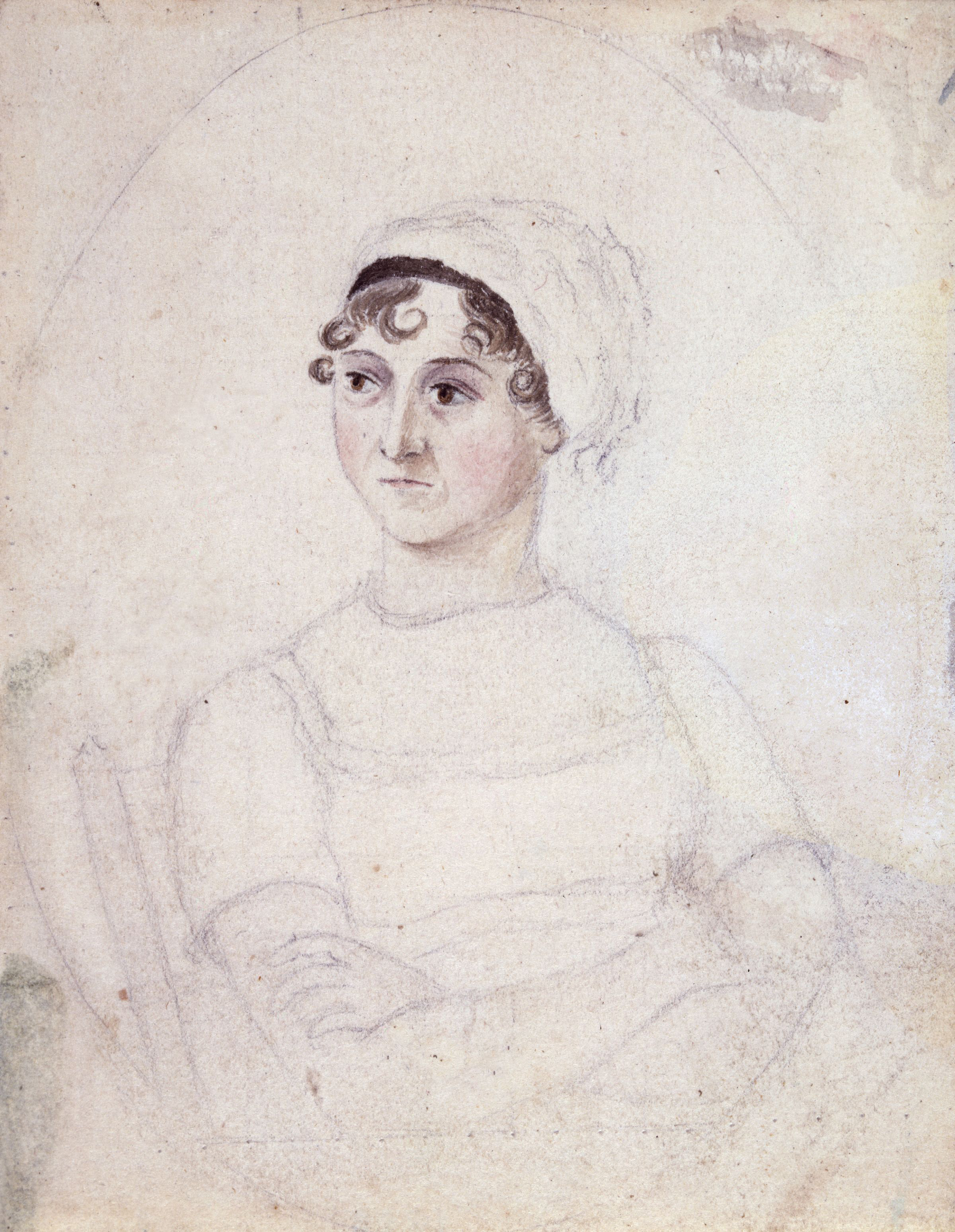As we read the novels of Jane Austen, consider what locations we travel to over the course of her oeuvre? Let's add them to this map to discern how some characters rarely leave their homes while others see far-off parts of the world.
EN 354R, Jane Austen, Skidmore College Dashboard
Description

Portrait of Jane Austen by Cassandra Austen, ca. 1810
It is a truth universally acknowledged that Jane Austen (1775-1817) is a keenly satiric writer whose work, deeply rooted in her time, resonates in ours. In this research-enriched course, we will read Austen’s six novels in their order of publication: Sense and Sensibility (1811), Pride and Prejudice (1813), Mansfield Park (1814), Emma (1816), Persuasion (1818), and Northanger Abbey (1818). Through virtual excursions and close reading, we will enter Regency ballrooms, country estates, and genteel parlors as we examine Austen’s voice as a writer and pressing issues that she actively critiqued, such as the economics of marriage, social class stratification, primogeniture, entailment, and slavery. To situate Austen in her historical moment, students will write four of six briefs (short papers on each Austen novel), a Regency life report (PowerPoint and oral presentation), and our IdeaLab project that will be displayed on the Collaborative Organization for Virtual Education (COVE). The course will culminate in a research paper on two or three Austen novels. Students should be prepared to read deeply, craft critically (for the IdeaLab component), participate actively, research deeply, and write analytically.
We will ground the novels of Jane Austen in her Regency world by practicing critical crafting and creating a gallery of our material objects on the Collaborative Organization for Virtual Education (COVE). Our two galleries will be on material objects of the Regency age--letter writing and silhouettes. Letters play a key role in most of Austen’s novels, but particularly in Pride and Prejudice and Persuasion. Using antique and reproduction pens from my personal collection and materials from the IdeaLab, students will use dip pens to write with ink, practice cross-writing (a cost saving measure where one turns a letter 90 degrees and writes over it), fold a letter (rather than use an envelope), and affix a wax seal. Like letters, portrait miniatures were popular Regency tokens of affection for Jane Austen’s family and her characters, who cherish, display, flaunt, and envy these items. Using materials in the IdeaLab, we will craft a portrait miniature/silhouette, which features prominently in Sense and Sensibility and Persuasion. To transform these tokens of affection into lasting mementos of our study of Jane Austen, we will turn to COVE. We will create two gallery exhibits—one on letter writing and another on portrait miniatures/silhouettes. Each student will design a virtual “case” for one of these two galleries.
Galleries, Timelines, and Maps
 . Silhouette Portrait of the Late 18th Century
. Silhouette Portrait of the Late 18th Century
The silhouette--a profile typically done in black and mounted on white--was a popular art form during the 18th and 19th centuries. Indeed, the Regency era when Jane Austen was publishing her novels is the recognized golden age of the silhouette. The term "silhouette" derives from a mid-18th-century French finance minister named Étienne de Silhouette, known to cut paper shadow portraits. The silhouette, a personal memento, became fashionable among genteel patrons of 18th-century and 19th-century Europe and America. Portrait miniatures, which often took the form of silhouettes, were also popular Regency tokens of affection for... more
 Period illustration from "The Regency Reader"
Period illustration from "The Regency Reader"
Today we communicate through texting, email, FaceTime, and telephones. Writing a letter may seem quaint today, but in the nineteenth century, letters were the chief form of communication. Unsurprisingly, letters play a key role in all of Austen’s Regency novels, but most particularly in Pride and Prejudice (1813) and Persuasion (1818). Using antique and reproduction writing implements from my personal collection and materials from the IdeaLab, students will practice writing with dip pens and ink, try cross-writing (a cost saving measure where one turns a letter 90 degrees and writes over it), fold a letter (rather than use an... more
Individual Entries
Box Hill is a real location pivotal to a significant scene in Emma, where Emma mistreats Miss Bates in front of ther peers during a picnic. Unlike the fictional Highbury, where the majority of the plot is based, Box Hill's existence is rooted in reality, and Austen likely visited it herself. Scholars like Anne-Marie Edwards suggest that Austen must have visited the site when staying with her relatives, the Cookes, at Great Bookham Rectory in June 1814 (she began writing the novel earlier that same year). Box Hill would have been reachable in under an hour from Great Bookahm back in Austen's day. Beyond serving as an authentic backdrop, Box Hill's name, tied to both conflict among characters and a sense of claustrophobia, adds depth to the novel. The dual significance of Box Hill encourages readers to be mindful of what in the novel should be taken literally or with additional meaning. (AR)
"They determined on walking round Beechen Cliff, that noble hill whose beautiful verdure and hanging coppice render it so striking an object from almost every opening in Bath." -"Northanger Abbey" Chapter 14
It is at Beechen Cliff where Catherine, Henry, and Eleanor take one of their peaceful walks in Northanger Abbey. Henry and Catherine discuss and bond over reading, particularly The Mysteries of Udolpho, and Mr. Tilney declares that "The person, be it gentleman or lady, who has not pleasure in a good novel, must be intolerably stupid.” The trio walks through the countryside and playfully tease each other. The pleasant outing is a wonderful juxtaposition to the horrible failed outing to Blaize Castle that Catherine was forced to attend in a previous chapter, as her time with the Tilenys is leagues more enjoyable.
EY
